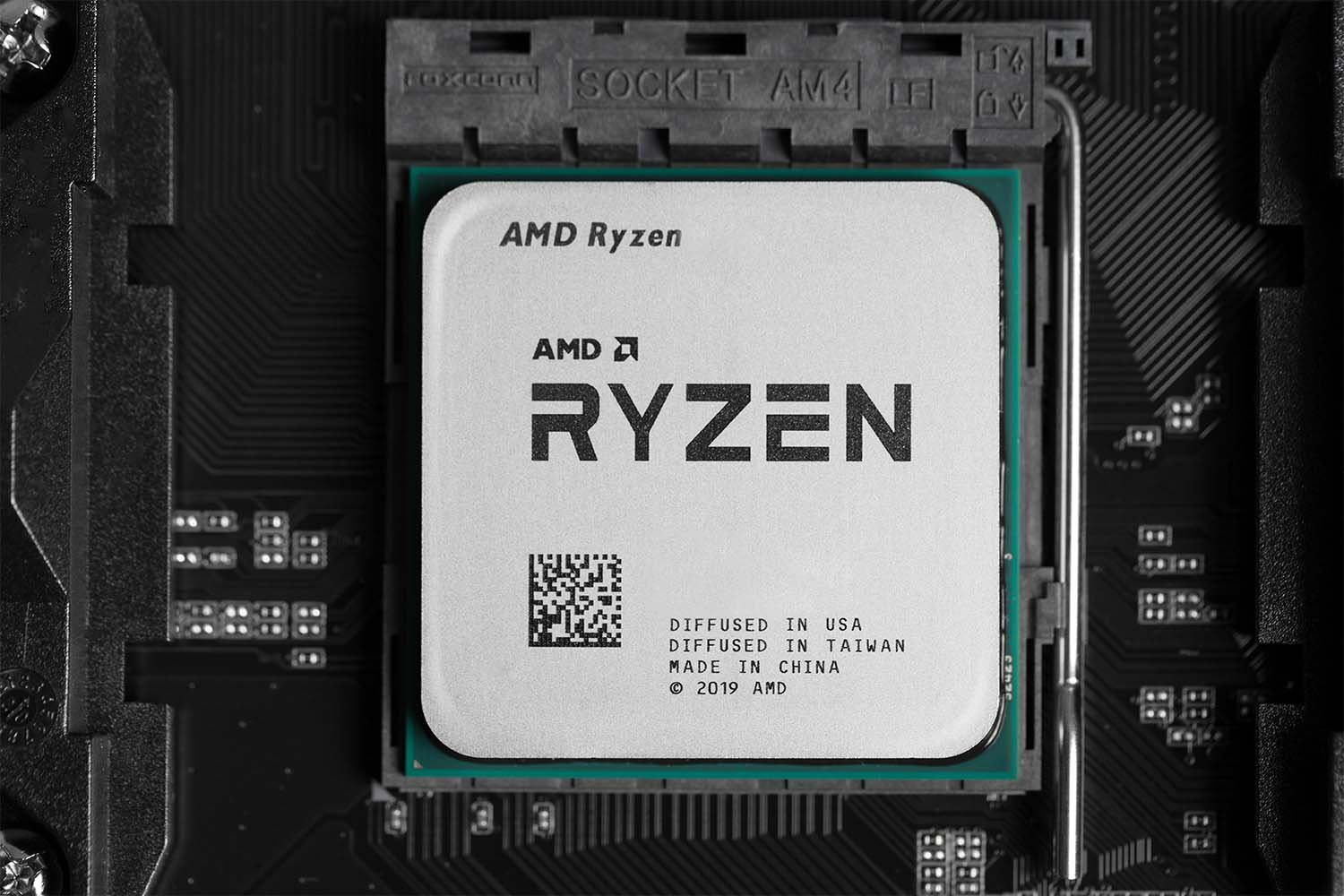AMD Ryzen 5 vs Intel i5: Which Graphics Card Is Better?
Every decision in building your PC matters, but some choices matter more than others. After the CPU, your GPU is arguably the most essential component in your build. Your GPU determines how well your PC will be able to handle gaming and other technical tasks, and seeing how each generation of graphics evolves is always exciting.
New architecture and better designs lead to improved hardware over time. Two of the biggest competitors in the field by market share are Intel and AMD. Here, we will be comparing the mid-range options for both.
AMD and Intel have released new generations of processors with integrated graphics cards within the last few months. We will be comparing the AMD Ryzen 5 line with the Intel Core i5 offerings, checking the core benchmarks for each and evaluating which line comes out on top.
Where Do They Stand Overall?
We are not examining high-end items in this list. We will be tackling the mid-range, accessible offerings of Intel and AMD. For a closer look at the best processors and graphics cards for an unlimited price point, we recommend scaling up your view: Nvidia’s GeForce 30 line, the Ryzen 9 line, and the Intel Core i9-12900k all offer top-of-the-line quality.
Those seeking better tech at slightly more accessible prices may examine the Ryzen 7 and Intel Core i7 series of chips. We have a comprehensive comparison between these industry titans for gamers looking for an accessible range of competitive, current chips.
AMD Ryzen 5
AMD Ryzen 5 chips utilize RDNA 2nd generation architecture, based on Zen 3+. The manufacturing highlights a 6nm construction over Intel’s 10nm. RDNA 2nd gen launched in 2020, which may be unappealing to those waiting for the 3rd generation to release. With only a portion of 2022 left — and an announced 2022 release date — more attention may be on AMD’s future than its present.
The most recent AMD Ryzen 5 chips line is the 6000 series. However, these chips are currently exclusively used in laptops, with a desktop version expected later on.
Alternatively, the next desktop series may skip the 6000 listing altogether and go to 7000. As of now, the most up-to-date series of desktop chips is the Ryzen 5000. These were released as recently as April 2022, with AMD slashing prices to compete again with Intel.
The Ryzen 5 5600X — the strongest of the 5000 offerings — features six cores and 12 threads. Admittedly, the core count for this level has not increased since the Ryzen 3000 series. However, the thread count allows for complex workloads to be handled at once effectively. It provides more than enough to run even intense new games like Elden Ring effectively.
Current architecture uses integrated graphics provided by various AMD Radeon RX cards. Though AMD has been hit-and-miss compared to Intel regarding its processors, it has consistently excelled in this category. Note that only the processors which end in “G” or the like feature integrated graphics cards.
The 5000 series has a base clock speed of 3.5-3.7 GHz and a boost clock speed of 4.2-4.6 GHz. The 6000 series has a base clock speed of 2.9-3.3 GHz, with a boost clock speed of 4.5 GHz.
Intel i5
Historically, Intel has been the gold standard in tech. This changed (somewhat embarrassingly) with their 11th-Generation Rocket Lake offerings. These chips ran significantly hotter than their predecessors and contemporaries, and their architecture was backported to 14nm silicone. Intel processors in this generation were limited by a critical weakness and an inability to get 10nm architecture running well.
This has changed with the 12th gen Alder Lake chips. Alder Lake uses e-cores to optimize the efficiency of the chip. This is not available in all chipset offerings; the Core i5-12600K and Core i5-12600KF both feature 4 cores and 6 p-cores for performance. This makes these two upper-level offerings phenomenal at their level, though the latter lacks integrated graphics.
Even the six-core intel chips come with benefits due to the wide range of support offered. Both ddr4 and ddr5 SRAM are supported by this generation of chips, making these core processors easy to integrate with a wide variety of builds.
Most significantly, the best of these chips are available fairly close to MSRP. The Core i5-12600K featured a launch price of roughly $300. Looking at Amazon reveals chips on sale at an initial price slightly above this and a sale price in the mid-200s.
The power usage must be noted, however. The Core i5-12600K and KF, launched in November 2021, has a base power usage of 125 Watts. The other 12th gen i5 chips do not even use this much power at max turbo. Though this series of chips are stronger by the numbers, the extra power usage is significant enough to note.
Overall, the 12th gen of intel processors is a powerful evolution. They’ve addressed the top issues plaguing the previous generation and have effectively fought back at AMD's evolutions.
Starting the Comparison: AMD Ryzen 5 vs. Intel Core i5
It’s time to analyze the big winners of this development. In the previous generation, Ryzen beat out Intel due to poor optimization on their part. Looking at contemporary offerings, this is complicated by a few details.
The Ryzen 6000 series is created exclusively for desktops. Meanwhile, the strongest offerings in the 5000 series are also some of the older ones. These beat out the 11th generation of Intel offerings but are somewhat dubious for competing against the current ones.
Intel, meanwhile, has come back with a vengeance. They’ve reduced in size and addressed some of the power issues plaguing their previous generation. Is it enough to place them on top again? Below, we compare them side-by-side:
The Comparison
Storage: Ryzen brings PCIe 4.0 to laptops, improving the digital space in ways that cannot be denied. Both Ryzen 5 and Intel i5 allow integration with SSDs and m.2 NVMe operations, providing faster load times online. A higher number of available lanes means you can customize your i5 to improve data storage access.
Power Consumption: AMD comes out as the winner in power consumption. The best of Intel’s offerings are massive power sinks, and those that attack this sacrifice the power making them excellent. Though the differential isn’t as bad as it was in the previous generation,
Price: Whether or not Intel or AMD wins out on price depends on where you are looking.
Core Performance: Intel and AMD are roughly equal in single-core processing. The multi-core specs spell out Intel as the clear winner, however. This likely comes from the mixture of performance and efficiency cores used in its design.
Integrated Graphics: Most intel processors use integrated graphics, while only some AMD processors do. This can be a blessing or a curse depending on your specific needs. Most of these integrated GPUs (including Intel UHD graphics) will be good enough for 1080p gaming performance. You may be left out in the cold if you want 4k graphics, though you’ll be able to play your favorite games regardless.
After examining these details, we’re ready to reveal the top chips.
The Best Chip By Every Standard
Best Value: Intel Core i5-12400 — This will be a downgrade from the best AMD and Intel chips available in the i5 and Ryzen 5 lines. Still, when it comes to entry-level offerings, Intel has AMD beat. For a long time, the latter has focused on $250+ chips, only recently reintroducing cheaper options. For a smaller-scale version of our best overall chip on the list, the i5-12400 meets all your basic standards.
Best Gaming: AMD Ryzen 5 5600X — Even after being out for a year and a half, this processor manages to be a great mid-range option. The piece can easily be overclocked safely compared to the current-gen Intel chips. A lower power consumption doesn’t harm its ability as a gaming CPU.
Best Overall: Intel Core i5-12600K — The Intel Core i5-12600K is equal to or better vs AMD Ryzen chips at an equivalent level. This makes it better, simply put.
What To Look for From Your Build
From processing speed to overclock performance to thread count, the little details directly impact your performance. They can lower latency, improve your gaming, and allow you to run complex apps simultaneously. The only thing you have to be wary of is that your motherboard is compatible with a given chip.
Gamers should know the best options available to them at every price point along the way. Not everyone has close to four figures to drop on a single component, no matter how it may improve performance.
Fortunately, there are cheaper ways to improve your experience. WTFast is dedicated to providing our top-tier subscription-based PC client, on top of essential free guides to everything game-related, to help you always play your best.
Sources:
Largest Tech & Computer Hardware Companies I Market Cap


